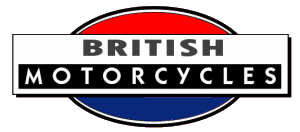


Rudge-Wedge motorcycles were produced from 1902 to 1904 in Mander Street, Wolverhampton.
Harry Rudge was the eldest son of Daniel Rudge, who founded Rudge Cycles (later Rudge-Whitworth). In 1891, he joined Mr. C. Wedge to form Rudge Wedge and Co. They set up a cycle works at Pelham Street, and in 1902 moved to new works in Mander Street. They also built a few motorcycles, but decided to concentrate solely on building pedal bicycles. Many of their products were supplied to the trade with their own or customer's transfers and large numbers of their machines were exported to the colonies.
1904 A spring frame model was produced, whereby the handlebars, footrests and saddle were a single unit sprung relative to the main frame in order to protect the rider. The Minerva engine was hung from the downtube to leave room for the suspension components. The front forks were unbraced and rigid, and linked back to the handlebar stem for steering.
The Rudge-Wedge Motor-Bicycle.
This machine is constructed by the old-established firm of Rudge-Wedge, Wolverhampton, whose cycles are well known for their high quality. As will be seen from the illustration, the motor-bicycle which they have just placed on the market is of a very symmetrical design. The motor, which can be had in two powers, either 1¾ or 2¼, is placed in an inclined position inside the frame, and is strongly supported between the diagonal and main tube. The drive is by means of a tubular section belt. The lubricator pump is conveniently placed alongside the steering socket, and either a spray or surface carburetter can be fitted at option. The accumulator, which has a capacity equal to 600 miles running, is carried in a metal case at rear of diagonal tube. A large silencer of cylindrical shape is fitted. A notable feature in the design of the motor is the position of sparking-plug, which is placed in the centre of combustion head. The controlling levers are conveniently placed. All the bicycle parts are of special strength, and a rim brake is fitted to front wheel, a New Departure or Morrow Coaster hub being built into the back wheel. The tyres used are Dunlop-Bartlett special motorcycle grade. The petrol tank has capacity for 140 miles running. The price of the 1¾ h.p. machine is £40, and of the 2¾ h.p., £42 net.
Source: Motor Cycling Magazine, Jan 1903.
Sources: Graces Guide
If you have a query or information about about this page please contact us